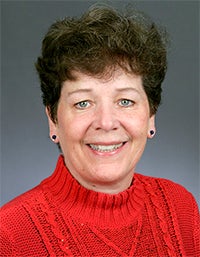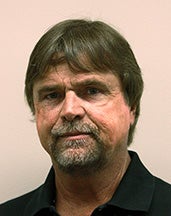Farmers weigh in on Dayton’s buffer proposal
Published 9:59 am Wednesday, March 25, 2015
By Kim Hyatt, Owatonna Peoples Press
BLOOMING PRAIRIE — Believing that the people with “boots on the ground” need the opportunity to provide input on Gov. Mark Dayton’s new buffer proposal, Rep. Peggy Bennett, R-Albert Lea, provided that opportunity on Saturday and more than 80 farmers from the region responded.
“We all want clean water. Farmers want that just as much as anybody else,” Bennett said in the crowded Blooming Prairie City Center on Saturday morning.
Dayton’s bill would require a minimum 50-foot buffer around “perennial waters,” or land that has a bed and bank with flowing water during the majority of the growing season. Buffers would increase water quality and protect habitat, proponents say.
But already the bill was amended since Dayton announced it on March 9, most notably going from a bill to benefit pheasant population to now being all about water quality.
After the listening session, Bennett, whose legislative district includes Blooming Prairie, said she foresees more changes to the bill.
A buffer, also known as a riparian area, is a filter strip that does two things, according to John Jaschke, executive director of the Minnesota Board of Water and Soil Resources:
• Holds the bank of the ditch together and keeps the soil bound as opposed to a buffer-free ditch which prevents erosion.
• Filters pollutant run-off from “sheet flow,” a concentration of flow coming from across land, such as a soybean field, which likely has phosphorus, nitrogen and sediment.
If the law passes, water quality buffer strips would need to surround perennial vegetation to prevent pollutants from entering water supplies in the state and everywhere south. In total, the bill could affect 125,000 acres of land adjacent to water.
And that’s where some opposition plays in.
Some farmers are complying with a drainage law that requires 16.5-foot buffers around perennial waters that’s been in place since 1977.
By adding another 36 feet to the buffer requirement, the state would be “taking hundreds of thousands of perfectly good acres out of production,” said Gary Pestorious, board chairman of the Shell Rock River Watershed District in Freeborn County.
“The 16.5-foot is there. I don’t know why you have to introduce something new,” Pestorious said to Jaschke.
There is an issue of compliance with the existing drainage law, as Jaschke pointed out: Only 20 percent of ditches have gone through the process known as redetermination of benefits which figures the cost of drainage systems and what landowners will benefit from the land.
The question was raised if buffer laws are an issue of policy or compliance? More importantly and an overwhelming concern of farmers — who is going to pay for all of this?
Programs at the local, state and federal level would provide assistance, and the bill relies on the federal Farm Bill. There are also reinvesting and cost-share programs available.
Despite giving up tillable land for buffers, some in attendance at the listening session said they still have to pay taxes on that land and the compensation received isn’t sufficient.
The new buffer law will provide a simple, uniform requirement that is consistent with existing shoreland rules that require 50-foot buffers on all public lakes, rivers and streams, Jaschke said.
He added that alternative plans and programs will be available because 50-feet may not be best for all perennial waters. There will also be a map indicating where buffers are required so everyone is on the same page.
About a decade ago, Freeborn County systematically began adding buffers and now nearly 100 percent of ditches are meeting the 16.5-foot requirement.
Pestorious was a part of the efforts done at a local level to have all ditches redetermined and in compliance with the 1977 law.
“Obviously the 50-feet is the problem and only on the ditches. The 16.5-feet that Freeborn County has put in was not a federal program. It was not a state program. It was handled by each ditch system,” Pestorious said. “Farmers have accepted it. What they’re not accepting is a 50-foot, one size fits all.”
Bennett wants to use Freeborn as example, rather than “reinventing the wheel.”
“If we can tweak something already working, that makes more sense than adding more bureaucracy,” she said.
The bill is now in the House of Representatives and if passed, buffers would need to be in place by September 2016.
“I don’t want conversations to go back to the state Capital saying that we’re against clean water,” said Tim Weirsam, board member of Minnesota Corn Growers Association. “We’re asking for a fair opportunity to be at the table to be a part of this decision.”







